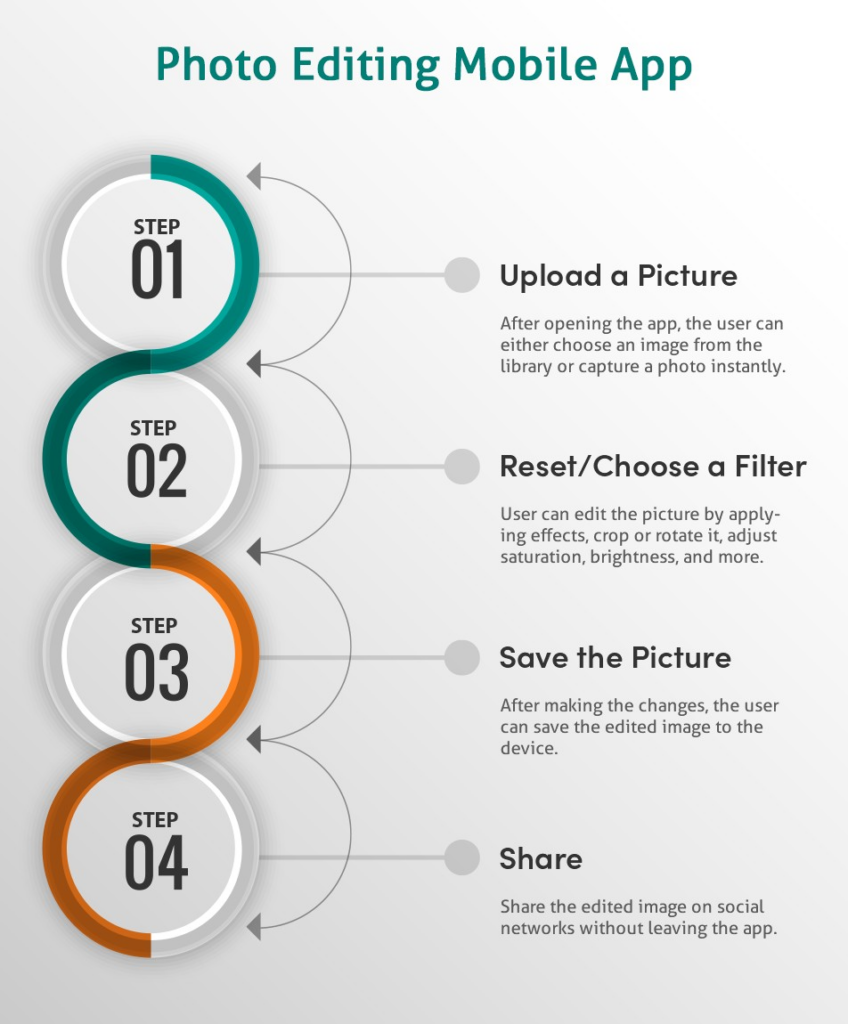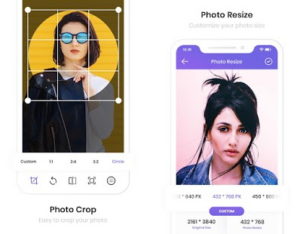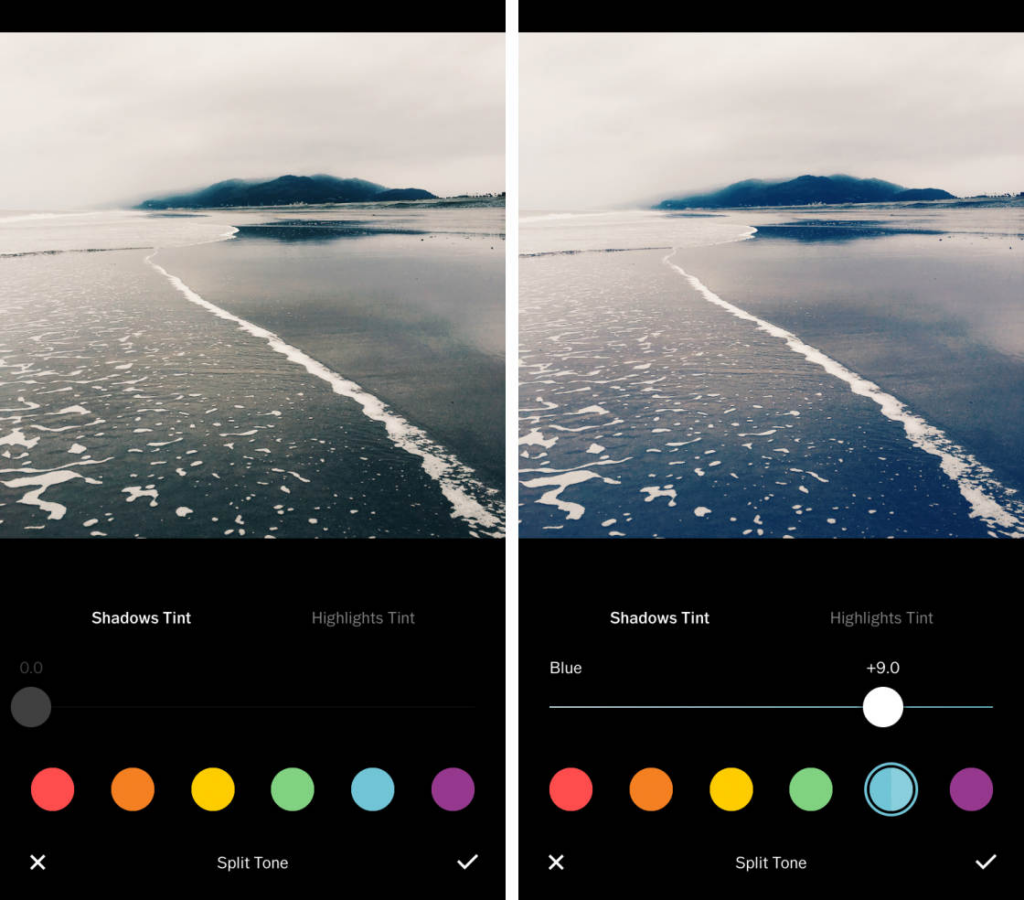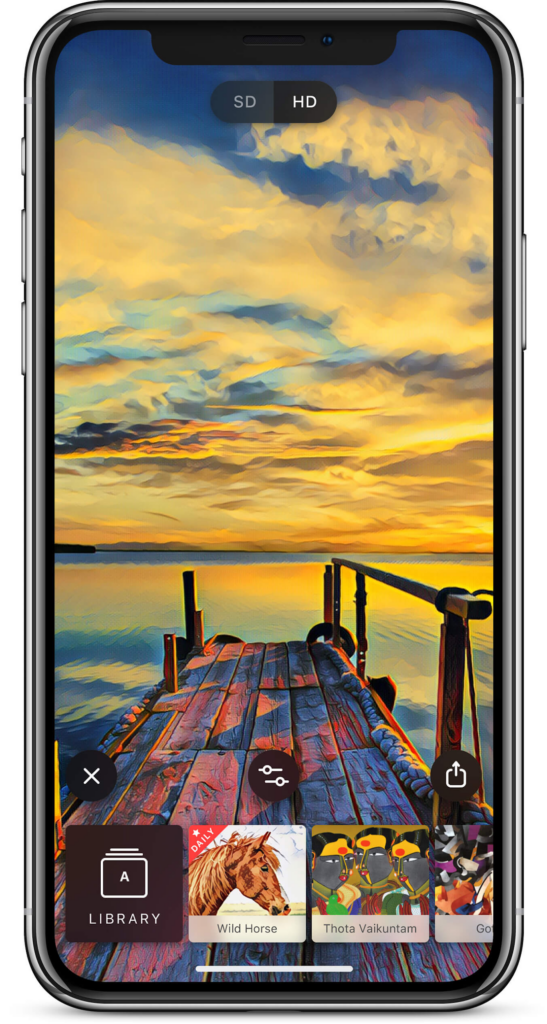3148
How to Make Photo Editing App: Must-have Features & Tech Stack
08 Dec, 2020
9 min read
3148
08 Dec, 2020
9 min read

Do you ever reach a point where you ask yourself – ‘what next?’
As a professional photographer or a photography company, you have a decent client base, a growing website, and maybe a studio too. But you always think your business lacks something. You look for ways to get one step ahead and explore other possibilities to grow your business.
Sounds like a familiar situation? Then your photography business needs a photo editing app.
Now you will ask for some proof. So, here you go –
According t0 Statista, about 45% of Americans use photography editing apps for Android and iOS.
The photo editing software market is expected to grow over $1030 Million by 2023.
Those entrepreneurs willing to enter this flourishing have one common question – how to make photo editing app. To answer that, we are sharing some insights on the features and technical requirements necessary to create a successful photo editing app.
But first, let’s understand how applications like VOSCO, Snappeed or Retrica work.
Topic Outline

What type of app do you need? What will be the features? Let’s find out everything.
Before we dig deeper into how to make photo editing app, let’s first find what types of image editing applications one finds in an app store.
There are two types – a regular editing app, and a social photo editor. There is not much difference between the two in terms of functionality. What’s different is the idea behind the two apps. Regular apps like Adobe Photoshop Lightroom, Google Snapseed, etc. focus solely on editing capabilities – choose a picture, edit, and save. On the other hand, social editing apps like VSCO have a social component where users can share pictures on social networking sites.
This brings us to an important question – which one to choose? The first type is a very basic option suited best for professionals and non-technical elders who have just started using mobile devices. While the market for social editing apps is impressive. Do you know about 95 million pictures of all kinds are uploaded to Instagram daily? Users want to upload the best of pictures on the internet and therefore, they need tools to edit pics.
Not sure which photo editor app your business needs?
The success of your photo editor depends upon the features you are planning to add. Your app must include features that allow users to modify the images the way they want. Now, let’s discuss the essential features to create images with unusual features:
1. User-Registration – the first thing that comes to mind when using an app is log-in. For future personalization, your app will need user-data. Hence the integration of the sign-up or log-in feature will allow you access to the data. You can give an option to sign-in via email, phone number, or other social networks.
2. Upload Picture – Every photo-editing app requires access to the device’s camera or image library. You require an image-uploading feature to enable users to submit a profile pic, and upload pictures to edit.
3. Crop and Rotate – This feature allows users to crop the image as per the standard format. They can even rotate, flip, resize, and shape. There are two options to add to the crop menu – fixed aspect ratios (like the rule of thirds, grid, and golden ratio), and custom sizes.

(Source)
1. Collage – Collage-maker is a wide-spread feature of a photo editor. Here, the user can select and upload multiple images from the gallery and combine them into one.
2. Change Background – This is a primary feature your mobile app should have. Here’s how the change background feature works for the user: upload a picture, mark the background area they wish to delete, add a new background, and save.
Filters have become a social necessity. If you type #Filters on Instagram, you will find more than 4 million posts. Building an editing app without filters is like eating a pizza without cheese. It’s totally worthless.
There are two categories of filters/editing features your app requires –
basic editing techniques include features that enhance the image to make it more powerful. Here’s a list of some basic features to adjust the image:

(Source)
All these terms get thrown around a lot in photography. Not every user knows what each term means. They are going to try and experiment. Make sure these effects are easy-to-use.
Using advanced features, you can make photo editor more profitable. Like mentioned before, if you are planning to make photo editor app, then you might want to create an MVP version with just the basic options like crop, resize, brightness, shadow, etc. But if the plan is to build a social app, these advanced filters are necessary. Let’s explore them in detail.
So, what must-have features your business needs?
Artificial intelligence is changing the world of photo editing and you do not want to be left behind. Just a couple of days back, Adobe released an update to Photoshop version that comes with a host of AI-powered features. These filters can adjust a subject’s age and facial expression, amplifying or reducing feelings like “joy,” “surprise,” or “anger” with simple sliders.
:no_upscale()/cdn.vox-cdn.com/uploads/chorus_image/image/67659504/neural_filters_age_change.0.gif)
How AI works in photo editing app ?
Simple filters change the image by adding an overlay. While AI-based filters completely recreate the picture by using algorithms based on machine learning and neural networks. Algorithms help change the structure of the image or video by responding uniquely to each photo or video based on the content. While neutral networks use object recognition to analyze images in layers.
Here’s how to make photo editor app using AI

(In the image: Prisma app which uses neural networks and artificial intelligence to apply artistic effects to transform images.)
If used correctly, AI-powered filters will ensure a grand entry of your mobile app into the market. You can develop the most immersive, and engaging content that your users will love.
Also, to give a fun element consider adding realistic stickers such as mustaches, beards, hairstyles, emojis, tattoos, eyeglasses, etc.
The final set of technologies depend upon your budget and other business considerations. Here’s a list of basic tech requirements:
1. Programming Languages – Kotlin or Java for Android applications, Swift and Objective-C for iOS development.
2. Libraries – OpenCV – supports both operating systems: iOS and Android
3. Application Programming Interface (API) – Open Graphics Library (OpenGL) for writing app with vector graphics.
Not a technical expert? Need help to build a photo editing application?
With a dedicated team of developers, designers, QA engineers, we will help you make photo editor just the way you want.
1. In-app Purchases: It’s a business model where you offer primary features for free but to unlock additional functionality, the users have to pay. This is a commonly used business model. Editing apps like VSCO provide basic functionalities for free but users need to pay for the premium account or pay for advanced features separately.
2. In-app Advertisements: Here, you provide the app to users for free yet generate a good revenue stream by offering relevant ads on the feet. For these ads, brands pay you either per impression or per click.
Building a photo editing app can give your photography business a push especially during such a time when businesses are slacking. It has the potential to reach a wider audience, and keep the stream of income flowing.
For further queries, contact our team, they will help you throughout the process.
All product and company names are trademarks™, registered® or copyright© trademarks of their respective holders. Use of them does not imply any affiliation with or endorsement by them.

68
By Biztech
09 Oct, 2025

75
By Biztech
09 Oct, 2025

91
By Biztech
06 Oct, 2025